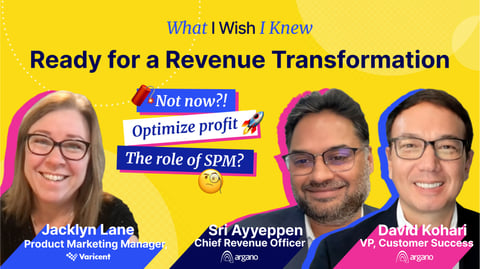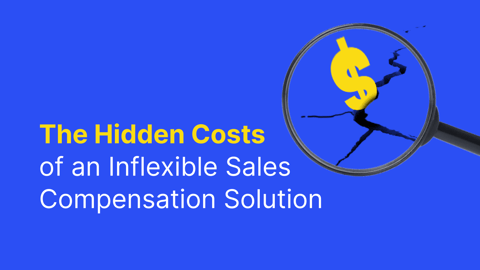There is one universal truth when talking about sales. To stay afloat and in the black, all businesses need to generate new leads as well as maintaining existing customers and make sales. Without customers and the successful sale of products, there would be no revenue or profit and the business would quickly collapse. And nobody wants that. Fortunately, sales teams have a host of tools, templates, and methodologies to keep them selling. One of which is the sales funnel.
In this article we’ll look at what the sales funnel is, the benefits it brings as you work through it. In an extra layer of content value, we’ll cover sales funnel management activities and the mistakes to avoid so you can keep a clear pathway to ongoing sales success and profit.
What is a Sales Funnel?
A sales funnel is both a descriptive and visual term used to describe the customer journey from being a “cold prospect” to the purchase of your product or solution. Broadly speaking, it covers, the initial customer engagement, marketing, and conversion journey.
The gains from applying the sales funnel can be enormous, as the focus is on shaping and influencing customer behavior and buying patterns. It’s important to avoid conflating the sales funnel with “sales pipeline” which focuses more on the salesperson’s process with emphasis on the proposal and commitment stages.
You can learn more about how to differentiate between sales funnel and sales pipeline here.
To visualize the sales funnel stages, which we’re going to look at next, the sales funnel is commonly represented as an inverse or upside-down pyramid, with the top, middle and bottom layers clearly marked out within.
Now you can picture the sales funnel, let’s give it some shape and context by explaining the stages and what each can bring to your sales business.
What are the Sales Funnel Stages?
1. Awareness
This first layer is critical as it is where your business makes the potential customer aware of the product you are hoping to sell and its benefits. This awareness or product visibility can be created and increased utilizing several methods, including direct marketing mail-outs, emails, brand, and advertising campaigns, or in-store promotions. In addition, awareness can be generated via social media platforms (you’d be surprised by what a timely tweet or well-placed Instagram image can do for sales), online offers and banners, influencers, and competitions.
The more channels you advertise across, the wider (or more specific) the audience you reach. Whether you’re going for a blanket campaign or taking a targeted approach, building awareness at this stage of the sales funnel is about identifying and filling a gap in the market. This is also the stage where you can discover what your audience is searching for. Once you’ve covered all bases on awareness, how do you follow this up and stimulate a genuine “interest” in your product offering?
2. Interest
This slice of the sales funnel is a delicate stage in your “courtship” with the potential customer. If awareness is about “strutting your stuff” AKA, putting your best qualities out there to be admired, then “interest” is the flowers and chocolate box stage of the romance. What can you give the lead to show your feelings, or in this case, demonstrate the value and worth of your product and the authenticity and knowledge that your business represents? A bouquet of red roses won’t cut it, let’s make that clear. However, offering a free demo, download of an eBook, or access to some of your cutting-edge content might pique their… you got it, “interest”.
To make this grabbing of interest even more effective, by using customer relationship management (CRM) data you can start to personalize their experience with a targeted email and offer campaign, or retargeted ads. The more you give, the more you’ll get back in terms of customer details.
3. Decision
This is a bit of a crunch time when biting into the sales funnel cake. Extending the crude analogy of “wooing” your potential customer, the “decision” stage is whether they’ll consider going on a dinner date with you or try out other potential suitors first. How will you win them over? It could be money off their first purchase, free shipping on orders over a certain amount, or an exclusive discount code.
It pays to be a bit cute and inventive in your approach (remember, other suitors are vying for the attention of your lead) but be ready to dig in with some real work and customer contact in the form of making case studies and webinars available, or live product demos. You really want the prospect to want you as much as you want them, so each of the enticements needs to show how much better life would be with you (or the product) in their life.
4. Action
Is this the time in the sales funnel to hire a plane to circle your town with a banner, saying “They said yes”? Hopefully, that’s the case, but “action” or purchase is often just the start of the customer/salesperson relationship. You’re still getting to know each other in the flesh, so it’s not the time to take anything for granted, especially loyalty.
Signing on the dotted line and putting in an initial order is a wonderful thing, but to give this stage of the sales funnel substance, be prepared to shower your newest customer with offers, training, and add-ons where applicable. Once the ink on the contract has dried, make sure you remain visible and contactable. There’s no place for ghosting in a buyer/seller relationship, and if your new customer feels ignored or cheated, they are just one click away from posting a bad review.
Now that we’ve layered up the basic sales funnel and before moving on to errors of getting the sales funnel process wrong, let’s take a different angle and blast out some benefits.
Benefits of a Sales Funnel
- Keeps the focus on customers who are more likely to buy your product or services.
- Naturally narrows and reduces prospects, so you don’t waste time on false leads.
- The sales funnel process allows your team to target their efforts and remain efficient.
- Creates and maintains a level of predictability and patterns across a changeable climate.
- Prospects that reach the bottom “action” level are almost guaranteed to become a customer.
- Once in the sales funnel, these customers, with the correct care, will provide repeat business, aka “lifetime value”.
- Revenue is increased, conversion rates are improved, so all the better for the bottom line.
How to Effectively Manage Your Sales Funnel
The sales funnel pyramid may appear to be in place, but there needs to be structure and rigor to manage it, so it doesn’t topple over. This is where solid sales funnel management can mean the difference between triumph or failure of your entire process. The steps to success we recommend are as follows:
1. Provide Adequate and Regular Training
A good sales team is never “done” with learning, training, or development. The example to embrace new technology and processes needs to come from the top-down, and the opportunities to grow in the role should be available to all. This is especially relevant in sales funnel management, as progressing a customer through the stages is a skill that improves with coaching.
2. Remove Roadblocks
Otherwise known as blockages in the funnel, the roadblock is any incident or point that stops the smooth downward flow between stages. What can cause these stoppages? From spending too much time on a lead that’s clearly unlikely to become a customer to wasting energy and resources in a territory with no appetite or interest in the product, these can be classified as common roadblocks that need to be cleared.
A proactive yet informed approach to identifying the causes of stoppages is the best way to plunge out the unwanted debris. Making the most of relevant sales performance management software such as Varicent’s Territory and Quota Planning solution will help you identify and eliminate many of the issues and situations that cause roadblocks.
3. Target Qualified Leads
As we briefly touched upon in the benefits list, there’s little to be gained by pursuing every one of your initial leads. This is where that training pays off, as experience and understanding of the sales funnel means that your sales team can quickly identify the stronger prospects. While a natural or learned flair for sorting the wheat from the chaff is part of the story, there is another route to targeting qualified leads, and this is by investing in lead-revenue software. By partnering with a proven solution, you’ll get at-a-glance metrics and analytics on who and how you should focus your resources.
4. Use a CRM System
We mentioned the use of a CRM earlier, but this is the perfect juncture to reinforce its importance in sales funnel management. A good CRM is more than a holding place for basic customer data—it’s how you tangibly follow your prospect as they follow the route to becoming a fully-fledged customer. More importantly, it will automate your email marketing campaigns, assist with personalization, and measure the progress of the stages using a combination of statistics and analytics. In short, it provides a workable system to run alongside the sales funnel management strategy.
Mistakes Made in Sales Funnel Management
Before embarking on a sales funnel management plan, it’s worth taking a moment to consider a few common errors that have come to our attention.
1. Failure to Balance Lead Generation and Lead Management
This scenario evolves when too many leads are poured into the sales funnel without due consideration, which results in one of those dreaded blockages. To keep a steady flow, avoid overload of leads that haven’t been fully investigated, otherwise, your sales team will be chasing their tales trying to follow up more leads than they can handle. The adage “Quality is Better Than Quantity” comes to mind.
2. Losing Focus of the Sales Process
While a great CRM is worth its weight in gold, getting too heavily invested in unnecessary applications can be a costly mistake. It’s worth bearing in mind that a CRM supplements a sales strategy by way of supplying data and automated functionality; it can help you identify problems but don’t rely on software to fix it. Putting too much emphasis on the wrong things can also result in setting unrealistic goals when assigning quotas, so keeping to the sales funnel management plan is critical.
3. Inadequate Sales Training
We’ve hammered home the value of sales training, so it makes sense that when there is a lack of coaching within the sales funnel management model, that inverse pyramid starts to shake on its foundations. Keep in mind that coaching is not just for newcomers; it should be a cornerstone of every performance review, even for those that have been in the sales game for decades. If they aren’t focused, then this could open the funnel to leaks, or add to the clogs. There will always be new techniques and technology to master, and the sales funnel is no exception.
4. Not Measuring Each Stage of the Sales Funnel
There can be a tendency to of our sales vigor into the end game and concentrate all that energy into the “action” tip of the sales funnel pyramid. That’s not how it works, though. There’s a good reason why there are distinct layers that require completion – and that’s because each one builds towards success. By taking note of the metrics at each juncture, you’re tackling the sales funnel in a measured way.
Manage Your Sales Funnel Management Plan
Sales funnel management may look straightforward diagrammatically and read as a simple end-to-end process, but that process needs to be respected and followed. There are no shortcuts. We’ll conclude with some basic but essential advice.
1. Set clear and concise goals: Keep reminding yourself and your team of what you hope to achieve from the sales funnel and what your objectives are.
2. Track measurement of leads through the funnel: Use your CRM and lead generation software as you progress through the layers. This will enable you to make informed strategic decisions on who to discard.
3. Ensure that your sales funnel duration is not too long or too short: Each will take up a slightly different length of time, but if it drags on you increase the opportunity for leakage, and too swift and rushed, you may overlook opportunities.
4. Measure your progress: It’s not just prospects that need to be tracked; Your sales team needs to know how they’re performing while they journey along the sales funnel, and any reporting will help you inform future sales funnel processes.
Discover more about Varicent’s winning approach to sales funnel management by booking a demo for our Lead to Revenue software solution today.




